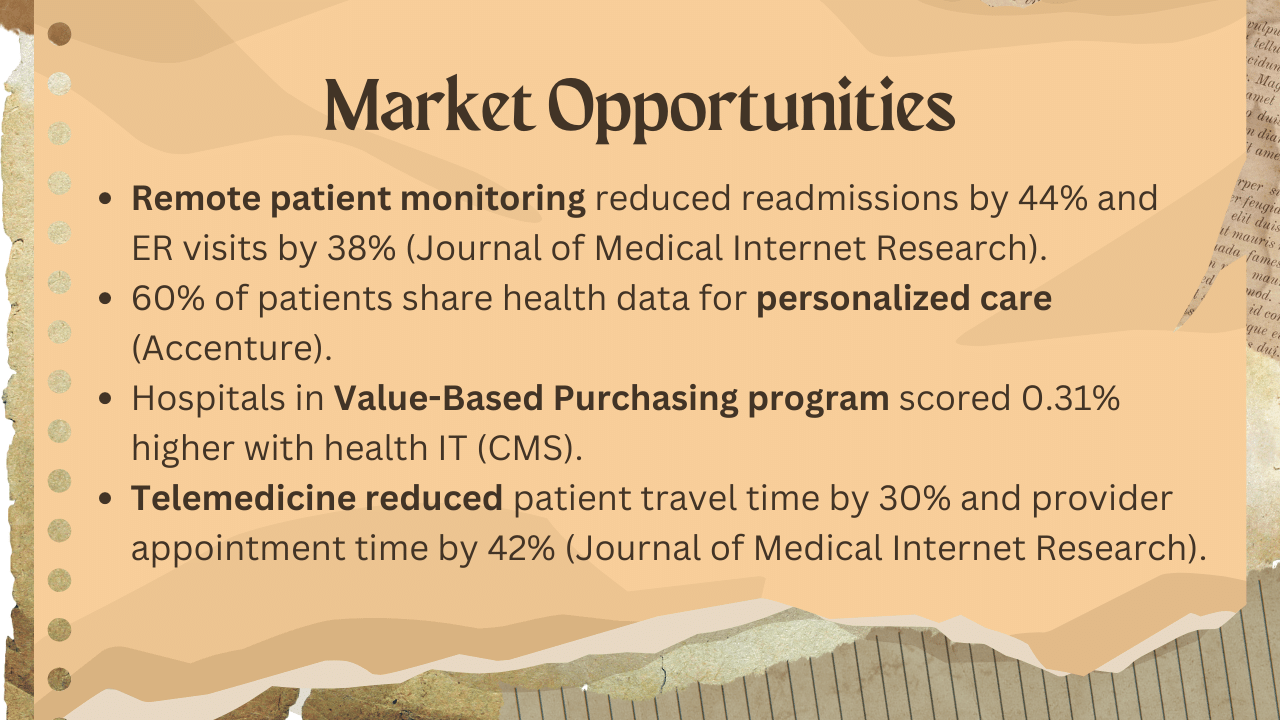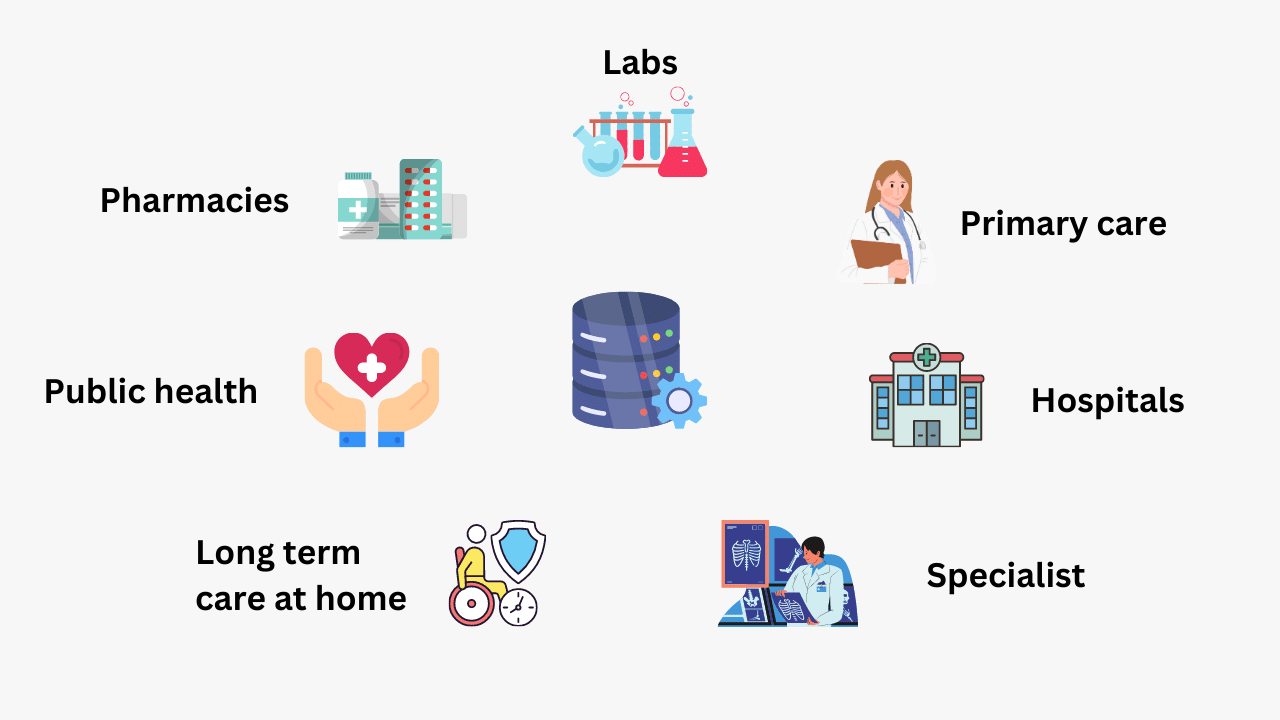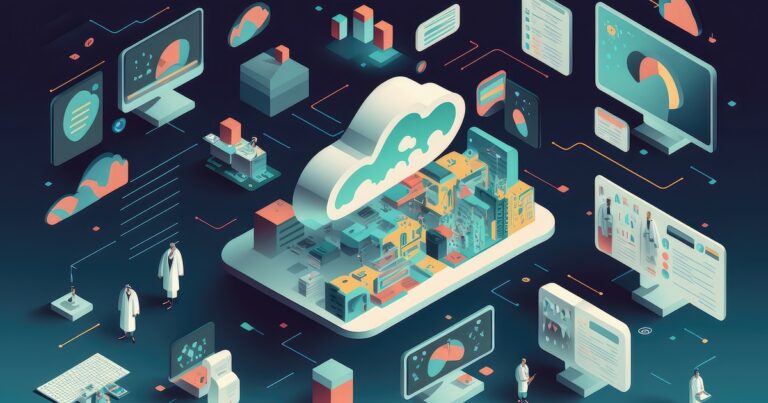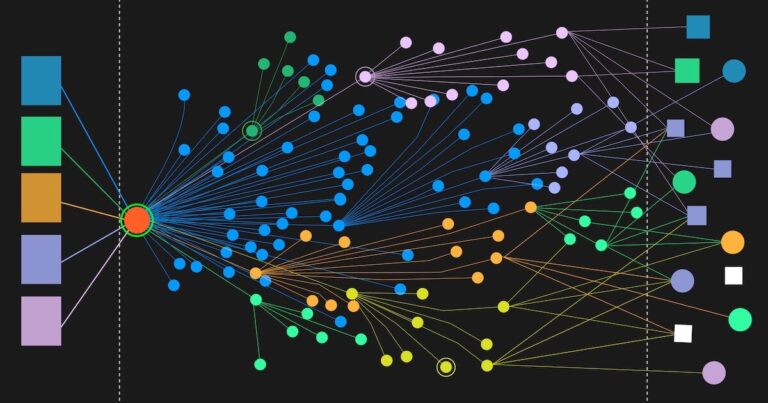The connected health ecosystem is becoming increasingly important as technology continues to advance and healthcare systems become more complex. In 2023, the importance of a connected health ecosystem will propel multifold to support better remote monitoring, personalized care, improved efficiency, and better data analysis needs. There are several stats and trends supporting the connected health ecosystem model such as:

- A study published in the Journal of Medical Internet Research found that remote patient monitoring resulted in a 44% reduction in hospital readmissions and a 38% reduction in emergency room visits for patients with chronic conditions.
- A report by Accenture found that 60% of patients are willing to share their personal health data with healthcare providers if it results in personalized care.
- A report by the Centers for Medicare & Medicaid Services (CMS) found that hospitals participating in the Hospital Value-Based Purchasing program had a 0.31% higher clinical process of care score when they used health information technology for quality measurement and reporting.
- A study published in the Journal of Medical Internet Research found that using telemedicine for follow-up visits resulted in a 30% reduction in the time patients spent traveling to appointments and a 42% reduction in the time providers spent on each appointment.
To enable such a level of seamless, on-demand information exchange, healthcare providers, vendors, and developers are paying a great deal of attention to data standards. That’s where FHIR or Fast Healthcare Interoperability Resource has become a popular and widely adopted protocol. FHIR is an application-based approach for joining together disparate systems to enable interoperability and health information exchange. In this blog, we will discuss in detail what FHIR is, its importance in the connected healthcare ecosystem, and how it is being used to further health data exchange. And how FHIR transforms the health IT landscape as well. Let’s begin!
What is FHIR?
Fast Healthcare Interoperability Resources (FHIR) is a healthcare data exchange standard that is designed to make it easier for different healthcare information systems to exchange information with each other. FHIR is based on modern web technologies, such as HTTP and RESTful web services, and uses XML and JSON for data representation. It also standardized data elements, known as resources, to enable the sharing of healthcare information.
FHIR is designed to be flexible, easy to implement, and scalable, which makes it an ideal solution for healthcare providers, researchers, and developers who want to improve the interoperability of healthcare information systems.

Just like users worldwide can access the same URL and perform identical tasks using any standard browser on any web-enabled device, such as a smartphone, desktop, or tablet running on different operating systems like Windows, Apple, Android, or Linux, FHIR aims to achieve a similar goal. FHIR strives to enable developers to construct standardized “browser” applications that provide data access, regardless of the underlying EHR “operating system” that supports the user’s infrastructure. FHIR is becoming increasingly popular and is being widely adopted by the healthcare industry due to its ability to support better patient care, more efficient workflows, and improved outcomes.
Why Did The Healthcare Industry Need FHIR?
The healthcare industry has traditionally struggled with interoperability and data exchange between different systems, resulting in siloed data, inefficiencies, and increased healthcare costs. FHIR (Fast Healthcare Interoperability Resources) was developed to address these challenges by providing a modern, web-based standard for exchanging healthcare data electronically.
FHIR is designed to be simple, flexible, and scalable, allowing for the secure and efficient exchange of healthcare data across different systems and platforms. FHIR is also well-suited for use with mobile devices and web-based applications, making it easier for patients to access their health information and for healthcare providers to deliver care remotely. FHIR emerged as an integral tool for improving interoperability, reducing inefficiencies, and improving patient outcomes in the healthcare industry.
What Are The Benefits Of FHIR In The Healthcare Industry?
FHIR fosters healthcare data exchange to enable a better health ecosystem powered by the true potential of digitization. It provides several benefits to payers and providers, such as:
Interoperability of data
There was a dire need to facilitate the interoperability of health data as it allows different healthcare systems to exchange patient data securely and efficiently. FHIR here enables different healthcare systems and devices to communicate with each other, regardless of the platform or vendor.
This improves the exchange of patient data, leading to better diagnoses and treatment plans, ultimately leading to improved patient care and outcomes. When healthcare systems are interoperable, doctors, nurses, and other healthcare professionals can access patient data from multiple sources, such as EHRs, medical devices, and other systems, regardless of where the data is located.
Standardization
FHIR brings standardization to healthcare data exchange by defining a set of standardized resources and data elements that can be used to represent healthcare information. This enables different healthcare systems to communicate with each other using a common set of data elements, which facilitates data exchange and promotes interoperability.
FHIR also defines a set of standard APIs for accessing and manipulating healthcare data, which makes it easier for developers to create applications and services that can be used across different healthcare systems.
Efficiency
FHIR enables faster and more efficient data exchange, which can save time and reduce costs for healthcare providers. It enables faster and more efficient data exchange by using modern web technologies and standard data formats. FHIR uses RESTful APIs that allow for easy and flexible communication between healthcare systems, devices, and applications.
These APIs are based on widely-used web standards like HTTP, JSON, and XML, which make them easier to understand and use. This is especially important for providers who need to access patient data quickly in emergency situations.
Patient-Centered Care
FHIR enables healthcare providers to access a patient’s complete health history, including data from other providers and healthcare systems. This can help providers make more informed decisions about patient care and provide more personalized treatment plans. FHIR’s focus on patient-centric data modeling enables the representation of health information in a way that is easy for patients to understand and access.
Additionally, FHIR includes specific resources and elements for representing patient preferences and goals of care, which allows for more personalized and patient-centered care planning. FHIR also enables patients to have greater control over their own health data through standardized access and authorization mechanisms, which allows patients to share their data with providers and caregivers as needed.
Innovation
FHIR provides a flexible and scalable platform for healthcare data exchange, which can enable innovation in healthcare delivery and the development of new applications and services. Developers can quickly and easily build new applications and services on top of FHIR, leveraging standardized data and APIs to provide new and innovative solutions for healthcare data exchange and management.
This flexible and scalable platform provided by FHIR supports ongoing innovation in the healthcare industry and helps to improve the quality and efficiency of healthcare delivery.
Compliance
FHIR is compliant with healthcare data privacy and security regulations, ensuring the protection of patient data. Besides supporting interoperability between different healthcare systems, FHIR supports role-based access control, data encryption, consent management, secure transport protocols (protect data during transmission between systems), audit trails, and complaint management, including HIPAA and GDPR. This way, it secures healthcare data transmission electronically just like other industries ensure security for data exchange.
How Is FHIR Related To EHR?
FHIR and EHR are both related to healthcare data exchange and management, but they serve different purposes and have different scopes. FHIR, or Fast Healthcare Interoperability Resources, is a standard for exchanging healthcare data between systems, applications, and devices. It provides a set of resources, APIs, and profiles that enable data exchange in a standard and interoperable way. FHIR is focused on data exchange and interoperability, rather than data storage and management.
On the other hand, EHR, or Electronic Health Record, is a digital record of patient health information that is collected, managed, and accessed by healthcare providers. It contains a patient’s medical history, diagnoses, medications, lab results, and other healthcare data.
EHRs are designed to provide a comprehensive view of a patient’s health information across different care settings and providers. FHIR is used as a standard for exchanging healthcare data, while EHR is a system for collecting, managing, and accessing patient health information. While FHIR can be used to facilitate EHR data exchange, they are different concepts with different purposes and scopes.
How Does FHIR Work?
FHIR (Fast Healthcare Interoperability Resources) works by providing a standardized format for exchanging healthcare data electronically. Here’s how it works:
FHIR Resources
FHIR defines a set of standardized resources, which represent discrete pieces of healthcare data, such as patient demographics, clinical observations, and medications. These resources are defined using a consistent data model and are designed to be easily understood by both humans and machines.
RESTful APIs
FHIR uses a RESTful API (Application Programming Interface) to enable communication between different healthcare systems and devices. RESTful APIs use standard HTTP requests to send and receive data, making them simple and easy to use.
Data Exchange
Using FHIR, healthcare providers can exchange patient data securely and efficiently across different systems and platforms. For example, a healthcare provider using an EHR system could use FHIR to access patient data from another healthcare provider’s system, such as a lab result or imaging study.
Implementation Guides
FHIR also provides implementation guides, which are detailed instructions on how to use FHIR to exchange specific types of healthcare data. These guides help ensure consistency and standardization in the use of FHIR across different healthcare systems and organizations.
How A Developer Can Step Into Building Connected Health Ecosystem Using FHIR and EHR
By stepping into building a connected health ecosystem using FHIR and EHR, developers can help improve healthcare interoperability and enable more seamless and coordinated care. This can ultimately lead to improved patient outcomes, greater efficiency, and cost savings in the healthcare industry. To build a connected health ecosystem, developers can adopt the following steps:
Learn about FHIR
Developers should become familiar with the FHIR specification, including its resources, profiles, and APIs. They should understand how FHIR can be used to enable data exchange and interoperability between healthcare systems.
Understand EHR systems
Developers should understand the architecture, data model, and APIs of the EHR systems that they will be working with. They should also be familiar with healthcare data standards, such as HL7 and CDA.
Identify use cases
Developers should work with healthcare providers and other stakeholders to identify the use cases where FHIR can be used to enhance EHR data exchange and interoperability. This could include use cases such as exchanging patient information between different providers, enabling patient access to their health information, or supporting clinical decision-making.
Develop FHIR-based solutions
Based on the use cases identified, developers can develop FHIR-based solutions that enable data exchange and interoperability between EHR systems. This could involve developing FHIR servers and clients, implementing FHIR APIs, and creating custom profiles for specific use cases.
Test and validate
Developers should test and validate the FHIR-enabled data exchange between EHR systems to ensure data integrity, accuracy, and completeness. They should also ensure compliance with regulatory requirements such as HIPAA.
Types Of Services And Solutions Provided Around FHIR Implementation By Vendors
There are various services and solutions provided by vendors around FHIR implementation to help healthcare organizations enable data exchange and interoperability. Here are some examples:
FHIR integration services
Vendors offer FHIR integration services to help healthcare organizations connect their EHR systems with FHIR-enabled applications and services. This could involve developing custom FHIR profiles and APIs, implementing FHIR servers and clients, and integrating FHIR with other healthcare systems.
FHIR-based applications
Vendors develop FHIR-based applications that leverage FHIR resources to enable specific use cases such as patient engagement, clinical decision-making, and population health management. These applications can be customized to meet the specific needs of healthcare organizations.
FHIR consulting
Vendors provide consulting services to help healthcare organizations develop an FHIR-based interoperability strategy. This could involve identifying use cases, selecting FHIR resources, developing custom profiles, and testing and validating data exchange.
FHIR data analytics
Vendors offer FHIR data analytics services to help healthcare organizations analyze and derive insights from FHIR-enabled data. This could involve developing custom dashboards and visualizations, identifying patterns and trends, and generating predictive models.
FHIR compliance and security
Vendors provide FHIR compliance and security services to help healthcare organizations ensure that their FHIR-enabled data exchange is compliant with regulatory requirements such as HIPAA, and that data exchange is secure and private.
How Does Cloud Platform Support FHIR Development?
As remote patient monitoring and telehealth become widely popular, how cloud providers can stay behind in supporting the FHIR enablement needs. There are several cloud based FHIR solutions commercially available for developers to build a modern healthcare ecosystem. Let’s check a few available with its own benefits and strengths and can be selected by organizations based on their specific use-cases.
AWS FHIR Works and Healthlake
FHIR works on AWS is a serverless implementation. It uses architecture patterns for designing and building integrations to existing systems. AWS has also introduced Amazon Healthlake, which is HIPAA-eligible service for healthcare providers, health insurance companies, and pharmaceutical companies. It allows them to store, transform, query, and analyze health data at petabyte scale.
Azure FHIR Service
FHIR Service is managed platform-as-a-service (PaaS) offering from Azure. It allows healthcare IT professionals to securely store and exchange Protected Health Information (PHI) in the cloud environment. Using FHIR service, a developer leverages the elastic scale of cloud for ingesting, persisting, and querying FHIR data.
Google Cloud Healthcare API
The Google Cloud Healthcare API for FHIR is a cloud-based healthcare data management platform that enables healthcare organizations to store, manage, and share electronic healthcare data in a secure and scalable manner. Google Cloud Healthcare API for FHIR is designed to conform to FHIR standard. With built-in security and compliance features, this cloud-based solution helps healthcare organizations improve interoperability, collaboration, and data sharing while ensuring data privacy and security.
The healthcare industry is experiencing a transformation through cloud-based FHIR services that facilitate easier access and exchange of patient data among healthcare providers. To begin implementing FHIR, you must determine the most suitable cloud-based FHIR solution that aligns with your requirements.
Conclusion
FHIR, or Fast Healthcare Interoperability Resources, is setting standards for exchanging health data electronically between different healthcare systems. This standard will enable developers to easily access and exchange health data across different systems, such as EHRs and health apps, in a secure and efficient manner.
With access to this data, developers can create innovative applications and services that leverage health data to provide new and improved healthcare technologies, services, and business models. Using application modernization solutions, these applications are built to be interoperable and provide personalized health advice or services for better patient care and satisfaction. By leveraging FHIR, developers can create these new innovations with greater ease and speed, ultimately leading to better healthcare delivery and outcomes for patients.




